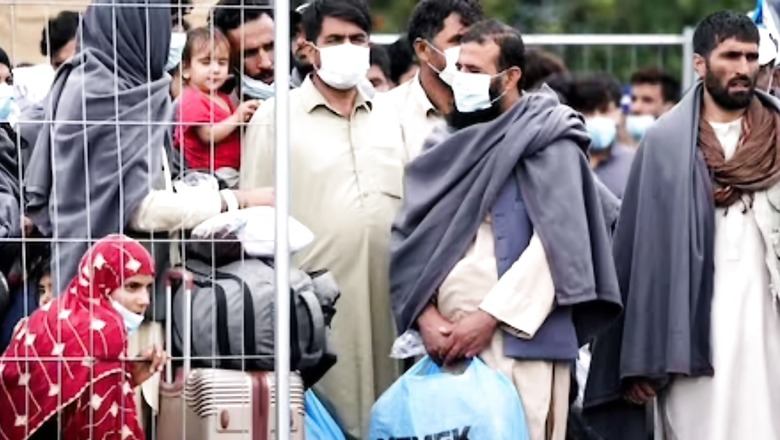
views
Last week a suicide bomb attack on an educational centre in Kabul’s Hazara-populated neighbourhood claimed lives of 46 young girls, bringing attention back to the persecution of the Hazara people in Afghanistan. While the first time when the Taliban had come to power in the nineties, Hazaras were among the most persecuted minorities in the country along with religious minorities such as Hindus and Sikhs. The Taliban’s return has once again led to increased persecution of these minorities, with Sikhs and Hindu community practically extinct and Hazara all set to become the next.
Hazaras comprise around 10 percent of Afghan population making them the largest ethnic minority but also the most persecuted one. Although members of other ethnic minorities such as Uzbeks and Tajiks are also persecuted in Afghanistan, Hazaras are particularly marked out because they practise Shi’ite Islam. Their distinct features make them easy to identify, with Sunni extremists such as the Taliban and Islamic State considering them as “infidels”. Thus they face a similar plight as the Hindus and Sikhs who have been practically eliminated from the country now with their number reduced to a population of mere 22. Even these last 22 Sikhs and Hindus are waiting to be brought to India under a Long Term Visa arrangement.
Afghanistan has a long history of Hazara persecution with the first recorded instance of their torture going back to the 20th century when the founder of the Afghan state Abdul Rahman Khan forced them to either leave or die. When the city of Mazar-i-Sharif fell to the Taliban in 1998, a door-to-door campaign was conducted by the Taliban fighters to execute male Hazara members including young children and rape or abduct the women in order to completely annihilate Hazaras from the Afghan society.
A brief break from persecution for them came during the American intervention enabling the members of this ethnic minority to educate and employ themselves. Since the return of the Taliban, worse is back as ghastly terror attacks by Al Qaeda, ISIS and Taliban have been claiming their lives on a daily basis. Within three days of coming back to power in 2021, Taliban fighters destroyed the statue of Hazara leader Abdul Ali Mazari in Bamiyan whom they had executed in 1995. Bamiyan is also the same place where Lord Budhha’s statues were blown up by the Taliban in 2001.
In 2021, a Hazara maternity hospital was attacked leaving 13 dead and another attack at a school for girls leaving 68 dead — most of whom were young students. These attacks have not only left members of the fast depleting Hazara community dead but has also debilitated them to pursue any meaningful vocation. Many Hazara families are left without any bread-winner due to loss of male members and restrictions on women under Taliban rule. Many children have withdrawn from school due to a spate in targeted terror attacks. A New Delhi-based Hazara student activist Ehsan calls it a systematic attack on Hazaras that has further deteriorated their position in Afghan society.
The members of the Hazara community who were successful in escaping persecution in the past to settle abroad are trying to use social media to amplify the plight of their community to the larger world. A hashtag “#StopHazaraGenocide” has been trending on Twitter since the suicide attack on a girls’ school last Friday. Interestingly, the Taliban have been organising press conferences and sending messages of inclusion as a Public Relations exercise, but nothing has changed on ground at all. Just last week, a group of Sikhs and Hindus escaped to India with support from the Indian government but the Taliban government of the Islamic Emirate of Afghanistan didn’t allow them to carry their holy scriptures along. Hazaras have even fled to Pakistan since the time of British India but even there they have remained a persecuted lot. In 2011, more than 1,300 people including 400 children died in terror attacks in Pakistan’s Quetta for which responsibility was claimed by Lashkar-e-Jhangvi, an Al-Qaeda affiliate in Pakistan.
Meanwhile in Afghanistan, in order to defend themselves in the face of such a brazen onslaught, some Hazaras have even formed their own armed militias with regular fighters and a volunteer force. They abduct kin of Taliban leaders to use as bargaining chips in return for Hazara hostages. But instances like these are very few. A vast majority of the Hazara community is vulnerable and needs the world’s attention. Just like the Sikhs and Hindus needed it but didn’t get any. Today the Sikhs and Hindus are extinct from Afghanistan, and Hazaras are next.
The author is a PhD in International Relations from the Department of International Relations, South Asian University. Her research focuses on the political economy of South Asia and regional integration. The views expressed in this article are those of the author and do not represent the stand of this publication.
Read all the Latest Opinion News and Breaking News here




















Comments
0 comment